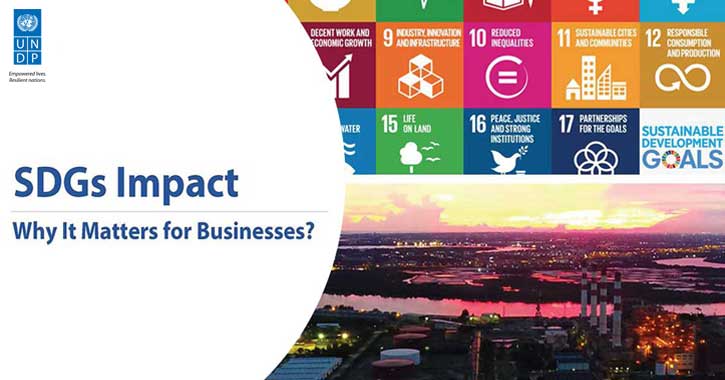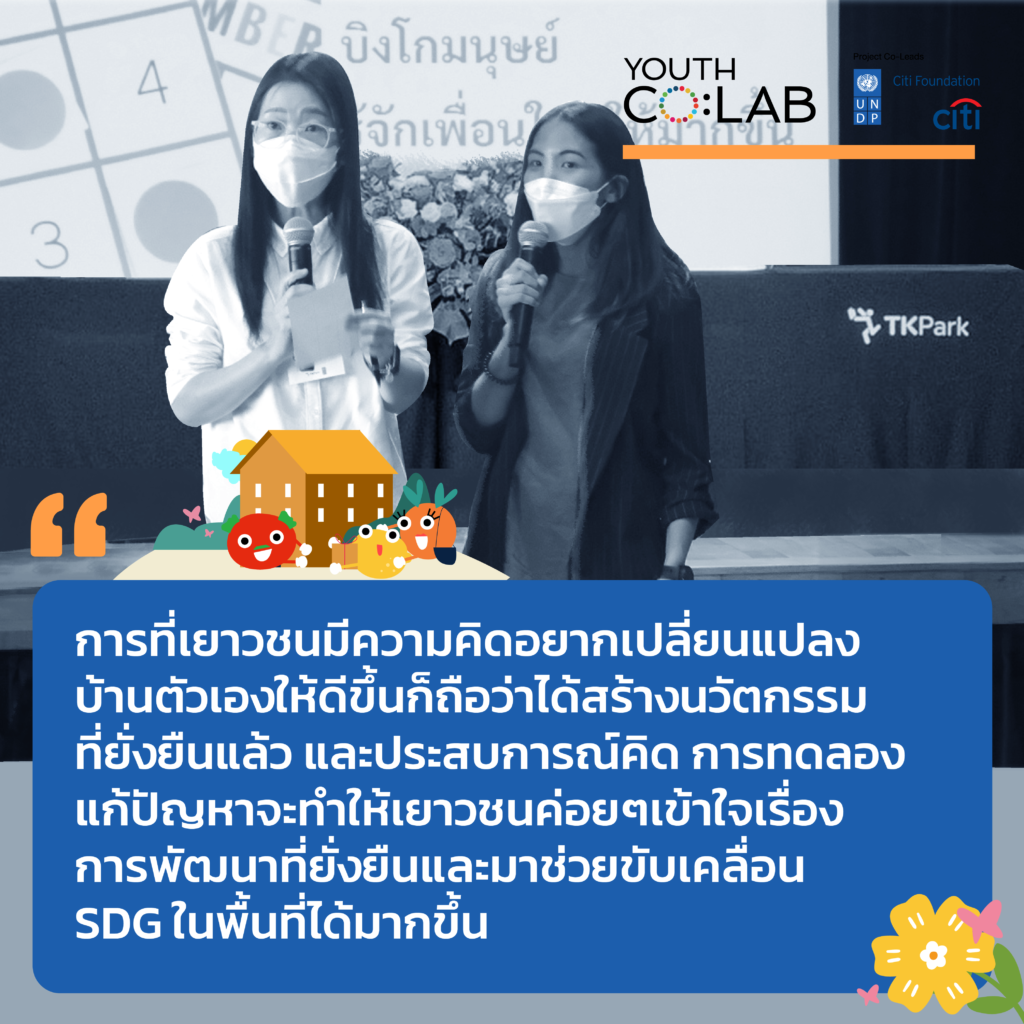- Published Date: 27/08/2019
- by: UNDP
SDGs in Action for Sustainable Tourism at Plean Yod Tarn Community with APYE

A mention of a coconut farm may bring to mind a picture of fresh, full coconut in your hand, ready to quench your thirst. But that very coconut has more to offer: coconut oil that is added to skincare products, the meat of mature coconuts that are extracted for coconut milk, or coconut blossoms – chan in Thai – from which the sap is used to make coconut sugar. In search of 100% natural coconut sugar, we went to a local farm and we saw all the hard work that goes into making it. It is no exaggeration to say all-natural coconut sugar is hard to come by nowadays.

We had an opportunity to follow the coconut farmers at Nang Ta Khian Sub-district, Samut Songkhram Province along with a group of young people from different countries thanks to the Asia Pacific Youth Exchange (APYE) program’s collaboration with the United Nations Development Programme (UNDP). In this sixth iteration of the exchange program in Thailand, the youth got to stay with the local community for one week.

We learned how to make coconut sugar from our hosts, a new generation of farmers who have enlisted the locals to preserve their community’s traditional knowledge before it faded away with time. The young farmers asserted the value of their local heritage and resources, and eventually were able to strengthen the bond of the community. On top of getting to be a farmer for a day, we gained an insight into the community’s genial and harmonious way of life – all reflected in the warm smiles of the aunts and uncles we met.

Equally important is being on the ground to explore the community and learn about various issues relevant to development through talking and working with the people in the community. This opened up an opportunity for the youth participants to discuss and become part of community development. They were able to present ideas and proposals for the locals to take up to promote sustainable tourism in accordance with Sustainable Development Goals (SDGs), the United Nations’ global goals for a better world.

You may have heard about sustainable tourism before, and you may wonder how we can promote tourism while balancing economic, social and environmental development, and ensuring participation from community members, the government, private sector, and tourists to protect the community’s livelihood and quality of life.
Let’s hear from Chareef Wattana, a law student at Thammasat University and one of this year’s APYE youth participants.

Why did you decide to apply to the APYE program?
One of the courses I’ve taken at Thammasat is Civic Engagement (TU100) so I’ve learned the basics of the Sustainable Development Goals. Thammasat is a university that cares about the environment and sustainability, which is very much aligned with the objectives of APYE.
“So being part of the program, I got to apply what I’ve learned to real work, theory to practice. I got to conduct a survey, identify problems in the community, and come together with youths from different countries to find possible solutions from our diverse perspectives.”

What is Plean Yod Tarn’s approach to sustainable development?
Plean Yod Tarn is a community-based social enterprise that was started by two young farmers together with the elders in Nang Ta Khian. Their initiative has led to better economy and livelihood for the community. Their product is environmentally friendly and that is a stepping stone to achieving other SDGs.
“First, I think it’s about participation. Because to mobilize actions for the SDGs, it takes more than a single person; it needs participation from different actors, from community leaders, people in that community, to young people. All of them are stakeholders when it comes to developing a particular community.”

What is the goal of sustainable tourism?
Attracting tourists to create jobs and income would advance the economy of the community. But we should keep in mind that their visits would not disrupt the locals’ way of life, both culturally and socially. We should also think about environment protection: how do we let people come into their environment without destroying it?
“The key objective of sustainable tourism development is being responsible for ecosystems and communities. Because sustainability is not just about today or tomorrow. It’s about this generation, the next generation, and the ones to come.”
“[It] isn’t just about today or tomorrow. It’s about this generation, the next generation, and the ones to come.”

How are youth important drivers of SDGs?
Youth are the future. They can do and will have time to do so much for our country. Most of them are now in university, acquiring knowledge in different areas of study. They will apply what they have learned to practice, and they will be proud of themselves for it.
“What we learn now isn’t just for a day job we’ll have in 4-5 years’ time. It is also for making an impact in your community, coming up with solutions to existing problems, and influencing policy change, urging the government or relevant agencies to recognize and redress the problems.

What did you take away from the program ?
Throughout the week where we got to interact with the locals, we saw how they genuinely felt about their community. One lady we talked to said she wanted to see her community making coconut sugar again. This sparked something in her and got her thinking about what they could do to preserve local knowledge and heritage and pass them on to future generations.
“It was such a new experience for me. I never knew we had so many great products and stories behind them. I feel hopeful that some people are thinking about developing the community and bringing about positive change. They make me want to do my part in making that happen, too.”




















